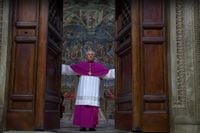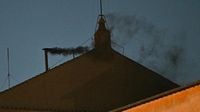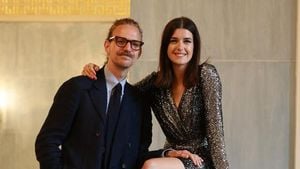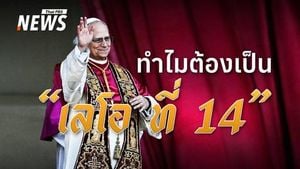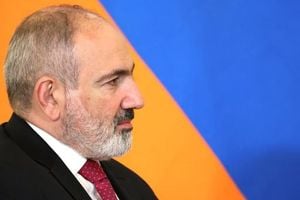The conclave to elect the new pope, gathering 133 cardinals, began on Wednesday, May 7, 2025. Thousands of faithful gathered in St. Peter's Square to see the first smoke from the Sistine Chapel, which will announce the new pope. The 133 cardinals processed to the altar to take an oath under the fresco of the Last Judgment.
On the evening of May 7, however, the first vote of the conclave did not produce a successor to Pope Francis. Black smoke emerged from the Sistine Chapel at 9 p.m., marking the continuation of the process to elect the 267th pope of the Catholic Church. This outcome was not unexpected, as the cardinal electors had been locked in the Vatican following a precise protocol throughout the day.
The day began with a solemn mass in St. Peter's Basilica, presided over by Giovanni Battista Re, the dean of the cardinals. In his address, Re emphasized the gravity of the task ahead, stating that the future sovereign pontiff will face a "difficult, complex and tormented turning point in History." He stressed the need for the future pope to focus on "maintaining the unity of the Church" and to set aside any personal considerations during this critical decision-making process.
After the morning mass, the cardinals participated in a prayer service in the Pauline Chapel before entering the Sistine Chapel at around 5 p.m. This historic chapel, adorned with Michelangelo's masterpieces, was sealed off from the outside world, with strict prohibitions against cell phones and telecommunications to ensure confidentiality.
The first vote, which took place later that evening, was primarily a means to gauge the strengths and preferences of the electors rather than to reach a definitive conclusion. To become the next pope, a cardinal must secure a two-thirds majority of the electoral college—89 votes—a threshold rarely met in the initial ballot.
Looking ahead, the election is set to continue on Thursday, May 8, 2025, with two votes scheduled for the morning and two more in the afternoon. If no consensus is reached after three days, the voting will pause for a day to allow for prayer and discussion among the cardinals.
The eyes of the world are now focused on the chimney atop the Sistine Chapel, where white smoke will signal the election of a new pope, while black smoke indicates that the process is still ongoing. As the conclave unfolds, speculation about potential candidates, known as "papabili," is rife. Among those considered are Italian Pietro Parolin, Frenchman Jean-Marc Aveline, Filipino Luis Antonio Tagle, and Maltese Mario Grech. With a majority of cardinals appointed by Pope Francis, this conclave could usher in a leader who embodies a pastoral approach, reflecting the values and spirit of the late pontiff.
As the conclave progresses, the faithful remain hopeful that a new leader will soon emerge, one who can guide the Catholic Church through its current challenges and into a new era.
